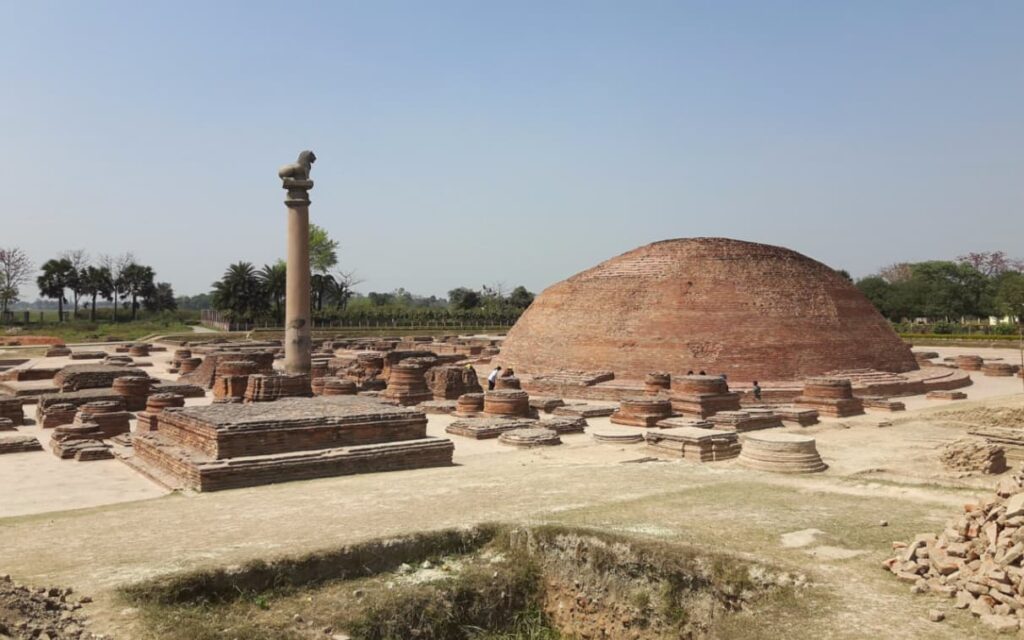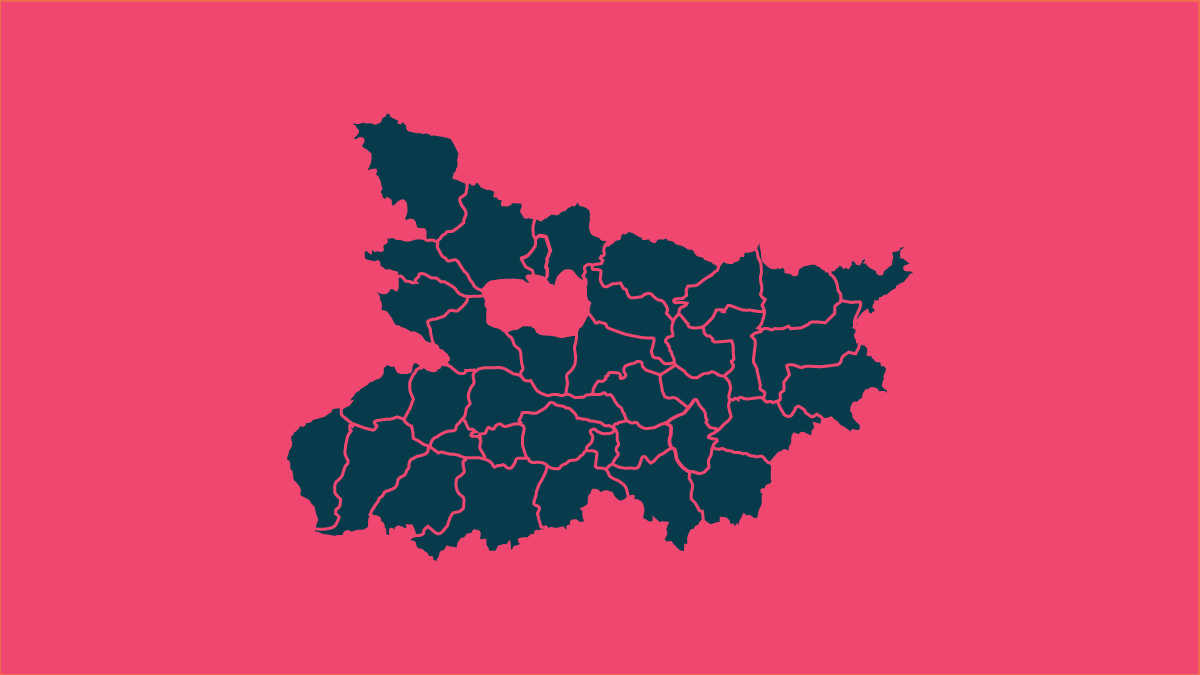In this article, I have explained the History of Muzaffarpur, its existence in different Dynasties and Empires, and its contribution to India’s freedom. Just give it a read you definitely will like it.
Muzaffarpur which is now popularly known as the city of Litchi is the four most populous district in Bihar, India
The city was established by the British Raj in 1875 when six Tirhut districts were divided. It was the British Raj who named Muzaffarpur after a revenue officer, Muzaffar Khan. Interesting isn’t it? Muzaffarpur was named after a revenue officer in British Raj.
Fun Fact: Muzaffarpur was named after a revenue officer Muzaffar Khan.
It is worth noting, In 1875, Sitamarhi and Vaishali were the parts of Muzaffarpur. However, In 1972, they became separate districts.
Muzaffarpur in Videha Kingdom
So far the oldest thing we came to know about Muzaffarpur is, In ancient times, it falls under the Kingdom of the Videhas which was the ancient Indian Kingdom in Late Vedic India. Maharaja Janak was the king of Videhas in the 8th or 7th century BCE.
If you want to visualize, if the Videha region still existed, it would have been spread in between northeast Bihar and eastern Nepal.
Muzaffarpur in Vajji Republic
Towards the end of the Vedic period, Videha Region became part of the Vajji Republic and then the capital of Videha shifted from Maithili to Vaishali. As I said above Vaishali got separated from Muzaffarpur in 1972 that means before the same year, the city was part of Muzaffarpur. Hence, Muzaffarpur was part of the Vajji Republic in 700 BCE.
Let me now tell you about the Vajji Republic.
The Vajji Republic was a group of eight clans in which Licchavis were the most powerful and influential.
It was the Licchavis who built Ananda Stupa in Vaishali which served as the capital of Vajji – one of the oldest republics.

It is said, Licchavis were so powerful that even a powerful kingdom of Madagadh formed a matrimonial alliance with them.
I am talking about Chandragupta Maurya who married a Licchavi Princess Kumaradevi in 308BC.
In 322 BC, Chandragupta Maurya conquered the Punjab Region, and thereafter with the help of Licchavis, In 325 BC he conquered Magadha (the Nanda Empire centered in Pataliputra). After that, he started the Mauryan Empire.
Muzaffarpur in Haryanka Dynasty
During 484–468 BCE, the Magadh-Vajji war happened in which Ajatsatru defeated the Licchavis and the capital was shifted from Vaishali to Rajagriha and then to Patliputra.
After Haryanka Dynasty, Muzaffarpur became the part of Shaishunaga dynasty > Nanda Empire > Maurya Empire.
Muzaffarpur in Vardhana Dynasty
In Vardhana Dynasty, Muzaffarpur was in control by Maharaja Harsha Vardhan between 606 to 647 CE.
Thereafter the district passed on to the local chiefs.
Muzaffarpur in Pala Empire
In the 8th century CE, the Pala Kings hold control over the Tirhut till 1019 CE. At that time Muzaffarpur was part of the Tirhut Region.
Thereafter till the end of the 11th century CE, Chedi Kings and then the Sena Dynasty rules Muzaffarpur.
In between 1211 and 1226 CE, Tirhut gets its first Muslim Ruler whose name was Ghais-u-ddin Imaz. Then, In 1323, Ghiyasuddin Tughlaq holds control over the district.
Thereafter, till the end of the 14th century CE, the king of Jaunpur controls the whole of North Bihar including Tirhut.
After a century, the emperor of Delhi, Sikandar Lodi defeated the king of Jaunpur to take control of North Bihar including Tirhut.
In the meanwhile, the Nawab of Bengal, Hussain Shah became so powerful that he take control over Tirhut but In 1499, Sikandar Lodi again takes control over Tirhut.
Later, Muzaffarpur became part of the Mughal Empire under Daud Khan.
Muzaffarpur History under East India Company
In 1764, the East India company fought the Battle of Buxar in which they defeated the Nawabs of Bengal to take control of Bihar.
Thereafter the revolution phase started in the whole country and the 1908 famous bomb case happened in Muzaffarpur.
Khudi Ram Bose, A boy of barely 18 years was hanged for throwing a bomb at the carriage of a British Author and Barrister named Pringle Kennedy.
For the same, after Independence, a memorial of Khudi Ram Bose was constructed in the city which is still existed.
On April 11, 1917, Mahatma Gandhi arrived at Muzaffarpur railway station. Acharya JB Kripalani visited the Railway station to receive him. At that time, Acharya JB Kripalani teaches in Langat Singh College which is still present in Muzaffarpur District near Chatta Chowk.
It is the Muzaffarpur from where Mahatma Gandhi started the Champaran Satyagraha movement. Some believe that if Mahatma Gandhi had not come to Muzaffarpur, perhaps it would have taken some more time to free India from the British.
Muzaffarpur city has played several important roles in the history of North-East India.
References: Wikipedia, muzaffarpur.nic.in


History of Muzaffarpur is incomplete without any mention of Babu Langat Singh .A man who visualised the importance of Education at that time. Thus , Muzaffarpur became the Educational Hub of North Bihar
I think muzaffarpur was a part of vaishali and but afterwards it get separated perhaps due to cultural differences so it’s already emerged with its new identity which earlier during 15th century prevailed moral of the story is that vaishali and its culture already preserved by separating it with muzaffarpur, what about the identity of muzaffarpur native area so there is no need to change the name…..
I was surprised to see one African Baobab Tree Plant in Turki, near Muzaffarpur. Its origin is Africa. Authority should research about it. Also, if anyone knows, how the plant came there, please reply to this comment.
Hi Doctor, I was surprised to know such a plant exists in Muzaffarpur. I hope this article and your comment help more native people of Muzaffarpur to know about the same.